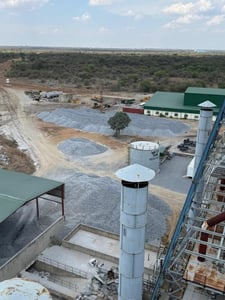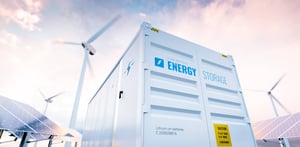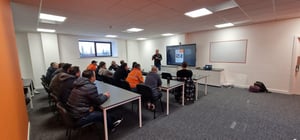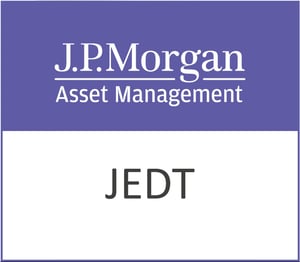TT Electronics plc (LON: TTG) have today provided interim results for the half-year ended 30th June 2019.
| £ million unless otherwise stated | Underlying1 | Statutory | |||||
| Continuing operations | H1 2019 | H1 2018 | Change | Change constant fx2 | H1 2019 | H1 2018 | |
| Revenue | 238.2 | 194.2 | 23% | 20% | 238.2 | 194.2 | |
| Operating profit | 19.2 | 14.6 | 32% | 27% | 6.9 | 7.7 | |
| Operating profit margin | 8.10% | 7.50% | 60bps | 50bps | 2.90% | 4.00% | |
| Profit before taxation | 17.4 | 14 | 24% | 20% | 5.1 | 7.1 | |
| Earnings per share (pence) | 8.8p | 6.9p | 28% | 22% | 3.3p | 4.4p | |
| Return on invested capital 3,4 | 11.30% | 11.50% | |||||
| Cash conversion5 | 28% | 105% |
| Free cash flow6 | -9.2 | 4.1 | |||||
| Net debt4 | -82.4 | -41.7 | |||||
| Net debt to EBITDA4, 7 | 1.2x | 0.8x | |||||
| Dividend per share (pence) | 2.1p | 1.95p | |||||
| Total Operations: Earnings per share (pence) | 3.9p | 4.4p |
Financial Headlines
- 20% revenue growth; up 8% organically
- Underlying operating profit up 27% at constant currency;
- Underlying operating margins up by 50 basis points to 8.1%
- ROIC of 11.3%; up 20 basis points to 11.7% excluding the impact of IFRS 16
- Dividend increased by 8% to 2.1p
Strategic Progress
- Business quality enhanced through continued focus on the right markets, capabilities and customers
- New customer wins, growth with existing customers and increased cross-selling opportunities
- Secured significant customer wins for recurring multi-million pound revenues
- Aerospace and defence and medical grew 37% (27% organically); now 45% of revenues
- Operational efficiency improvements from footprint action underway
Richard Tyson, TT Electronics plc Chief Executive Officer, said:
“We have delivered strong revenue and profit growth alongside further margin progression in the first half despite a tougher market backdrop.
The evolution of TT into a higher quality, better balanced Group reflects our strategic focus on picking the right customers in the right markets and investing in the right capabilities. The actions we have taken to concentrate on sensing, power and connectivity solutions across aerospace and defence and medical, whilst refining our portfolio of businesses through acquisitions and disposals have transformed TT.
We believe our strategy to position TT to benefit from “electronics everywhere” will continue to strengthen the Group. Despite the current macroeconomic environment, our first half performance and order momentum position us well to make further progress in 2019 and beyond.”
Notes
- Excluding the effect of restructuring and acquisition and disposal related items
- Change at constant currency calculated by comparing current year actual results to the prior year results retranslated at current year actual exchange rates
- Rolling 12 month underlying operating profit return on average invested capital
- Return on invested capital, net debt and net debt to EBITDA for full year 2018
- Underlying operating cash flow (underlying EBITDA less net capital expenditure, capitalised development expenditure, working capital and non-cash movements) divided by underlying operating profit
- Net cash flow from operating activities less net cash flow from investing activities less interest paid less repayment of IFRS 16 leases
- Net Debt excluding leases previously recognised as operating leases divided by underlying operating profit excluding the impact of IFRS 16, including full-year pro-forma effect for acquisitions. Measure used for our banking covenants.
The non-IFRS financial measures reported in this announcement are explained in note 5.
H1 2019 OVERVIEW
We are really pleased with the underlying performance of the Group in the first half, having delivered strong revenue growth, profit improvement and margin progression. Revenue grew by 20 per cent at constant currency to £238.2 million (H1 2018: £194.2 million), up 8 per cent organically. Foreign exchange had a £4.5 million positive impact. The incremental contribution from acquisitions in the first half was £23.6 million. Growth was driven by Power and Connectivity and Global Manufacturing Solutions with increased penetration of existing customers and a number of new customer wins. The aerospace and defence and medical markets, which now represent 45 per cent of the Group, grew by 37 per cent (27 per cent organically).
Underlying operating profit increased by 27 per cent at constant currency to £19.2 million (H1 2018: £14.6 million), with the improvement largely driven by operational leverage and better efficiency. Underlying operating profit from acquisitions was £1.6 million. The underlying operating profit margin was 8.1 per cent, up 60 basis points as reported and 50 basis points at constant currency (H1 2018: 7.5 per cent). Underlying earnings per share increased 28% to 8.8p, or by 22% on a constant currency basis.
Return on invested capital (“ROIC”) continued to improve. ROIC was 11.3% and 11.7% excluding the impact of IFRS 16, up 20 basis points (FY 2018: 11.5%). Our cash performance reflects the strong growth momentum of the business. Cash conversion was 28 per cent (H1 2018: 105 per cent) reflecting a £15.1 million working capital outflow, with cash absorption into working capital driven by our strong organic growth together with first half seasonality. We expect the latter to reverse and our cash conversion overall to return to target levels through the second half of the year. The Group had a free cash outflow of £9.2 million (H1 2018: inflow £4.1 million). Net debt was £82.4 million at 30 June 2019, including £19.9 million of IFRS 16 lease liabilities (31 December 2018: £41.7 million).
STRATEGIC PROGRESS
We are making good progress with our strategic priorities which have strengthened the Group overall and are driving sales growth and margin improvement.
Strategic business development
By focusing on markets with structural growth drivers the business is exposed to the best growth dynamics.
The changes we have implemented in business development have also made a real difference. We continue to secure brand new customers and grow key accounts. We won significant contracts with two defence primes, one a brand-new customer. In particular, there are 8 notable aerospace and defence customers with whom we have grown revenues or won new contracts to position ourselves for future platform growth. Across medical markets, we have increased our sales with our 3 largest long-term customers, which contributed to strong growth during the period. We won a new medical customer in China with potential for growth and to develop into a strategic partner. As a result, revenues in aerospace and defence and medical markets grew by 27% organically.
This has now been supplemented with increased cross-selling between our divisions and our new acquisitions. As a result of this collaboration, we won new orders with an aerospace and defence customer and a British luxury automotive company. We also won a new medical customer in Precision for implantable hearing devices. We already see good opportunity from the acquisition of Power Partners to introduce power supplies to our existing customers and a large global medical and life sciences OEM has already approved Power Partners as a potential supplier.
R&D and Value-added product solutions
During the period we invested £7.1 million in R&D, representing 5.4% of revenue from our Power and Connectivity and Sensors and Specialist Components divisions (H1 2018: £5.7 million). We launched a brand-new power solution, a prototype power conversion unit, at the Paris Air Show which follows the investment started last year for power solutions for aerospace and defence applications in our advanced technology centre. This brings together our experience and domain expertise as well as technology from individual components into a higher value solution. We are well positioned for longer term growth in our markets. We are working in strategic partnership with several aerospace and defence customers on technology demonstrator programmes for the next generation of aircraft from our advanced technology centres in the UK. We continue to focus our R&D investment in our core capabilities of power solutions for aerospace and medical applications, connectivity for the industrial internet of things, and specialist sensing capabilities.
Operational excellence
We continue to drive self-help actions to improve delivery to customers and drive margin enhancement. The investments made in 2018 have resulted in significant improvements in performance in our facilities in South Wales and Devon in the UK, and we won new customers following the operational improvements made. Our operational performance improvements have been recognised with a customer award from Rolls-Royce Controls Systems for being the most improved supplier, and a quality award from Honeywell.
We have initiated self-help actions given softening market dynamics in our Sensors and Specialist Components division to right size the cost base including closing two of our smaller facilities. We remain focused on the self-help opportunities available to the Group.
Value-enhancing acquisitions
The integration of Precision and Stadium into the Group is complete. Delivery of the synergy plans is progressing very well and three smaller facilities are being closed, with production consolidated into existing facilities. The enhanced total synergy plan for the two acquisitions of £2.5 million by 2020 remains on track.
On 22 March, we acquired Power Partners Inc, a small US power supply provider, which enhances our technology capabilities in power products and improves our medical market access accelerating our organic technology roadmap and US medical market presence. The consideration was $1.6 million on a cash free debt free basis, with an additional performance-based amount of up to $1.3 million payable over two years. We have already successfully generated cross-selling opportunities.
We continue to consider targeted, complementary acquisitions to accelerate our strategy, expand our technology offering and our market reach.
DIVISIONAL REVIEWS
SENSORS AND SPECIALIST COMPONENTS (27% of Group revenue)
The Sensors and Specialist Components division works with customers to develop standard and customised solutions including sensors and power management devices. Our solutions improve the precision, speed and reliability of critical aspects of our customers’ applications.
| H1 2019 | H1 2018 | Change | Change constant fx | |
| Revenue | £64.1m | £62.4m | 3% | (2)% |
| Underlying operating profit | £7.5m | £8.6m | (13)% | (15)% |
| Underlying operating profit margin | 11.7% | 13.8% | (210)bps | (180)bps |
Note: Prior period restated for the transfer of the Malaysian Magnetics business to Power and Connectivity division.
In 2018 the Malaysian Magnetics business generated revenue of £17.5 million and underlying operating profit of £2.8 million. In the first half of 2018, the business generated revenue of £8.9 million and operating profit of £1.3 million.
Revenue in the first half was £64.1 million (H1 2018: £62.4 million), up 3 per cent and down 2 per cent organically. Following a very strong performance over the last two years with component shortages contributing to strong growth, softer market conditions and inventory de-stocking in the first half across the market has impacted demand.
Underlying operating profit for the period was £7.5 million (H1 2018: £8.6 million), down 15 per cent at constant currency. Underlying operating margins were 11.7 per cent (H1 2018: 13.8 per cent). The reduction was a result of drop through from lower revenues and cost headwinds. We have accelerated actions to improve the efficiency of our cost base including optimising our footprint and fixed labour costs, and as result are in the process of closing 2 facilities and consolidating production within our existing footprint. The total cost of this program is circa £2 million, with a payback within 12 months. Initial benefits from this are expected in the second half of the year. We continue to review self-help actions available to us in the business.
Since 2015, we have ramped up investment in R&D to launch new products and provide more valuable custom development in partnership with our customers. We continued the momentum of new product launches including a new sensing and power management product released in the period for use in hybrid electric vehicle battery management and energy metering. During the period we have won positions with new and existing customers, including a contract with a US defence prime from a cross-selling opportunity following the acquisition of Precision last year. We are providing a custom sensor used in power management for a precision guidance mechanism. We have seen good growth in the period with a global industrial customer for our sensors which provide solutions for accurate information sensing for cash and card transactions. We are also winding down a tail of lower margin products to improve the quality of revenues in the division.
POWER AND CONNECTIVITY (28% of Group revenue)
The Power and Connectivity division designs and manufactures power application products and connectivity devices which enable the capture and wireless transfer of data. We collaborate with our customers to develop innovative solutions to optimise their electronic systems.
| H1 2019 | H1 2018 | Change | Change constant fx | |
| Revenue | £67.6m | £47.6m | 42% | 40% |
| Underlying operating profit | £7.2m | £3.8m | 89% | 80% |
| Underlying operating profit margin | 10.7% | 8.0% | 270bps | 240bps |
Note: Prior period restated for the transfer of the magnetics business to Power and Connectivity division.
In 2018 the Malaysian Magnetics business generated revenue of £17.5 million and underlying operating profit of £2.8 million. In the first half of 2018, the business generated revenue of £8.9 million and operating profit of £1.3 million.
Revenue for the first half grew to £67.6 million (H1 2018: £47.6 million), an increase of 40 per cent at constant currency and 4 per cent organically. We saw good growth in aerospace and defence, which now accounts for 41 per cent of revenues in the division. Acquisitions contributed £17.3 million of revenue.
Underlying operating profit was £7.2 million (H1 2018: £3.8 million), up 80 per cent at constant currency, with a £1.7 million operating profit contribution from acquisitions. There was a 240 basis point improvement in operating margin, to 10.7 per cent reflecting efficiency improvements from last year’s process investments, combined with operational leverage on the strong growth.
We continue to benefit from the electrification of aircraft. We increased sales to key aerospace and defence customers and saw strong growth related to volume ramp up on defence and civil programmes for power products as well as satellite and space projects. We won a contract with a new space customer for satellite navigation solutions. We saw good growth with power products for Honeywell, with whom we also won a quality award.
We have invested in engineering for the next generation of power solutions working across components, sub-assemblies and power solutions. We are actively working on several industry, government and customer funded projects focused on new technology for the next generation of electrical solutions on aircraft, working alongside our key aerospace and defence customers.
At the start of the year we transferred our Malaysian Magnetics business from the Sensors and Specialist Components division to the Power and Connectivity division bringing together all of our electromagnetics design and manufacturing capabilities in one division. This allows a joined-up approach in their routes to market and the optimisation of manufacturing footprint strategy and follows work to accredit our Malaysian facility for aerospace and defence work and the transfer of some of our product lines from our facility in North Devon, UK to Malaysia to create capacity required for growth.
The integration of Precision and Stadium into the Group is complete. Delivery of the synergy plans is progressing very well and three smaller facilities are being closed, with production consolidated into existing facilities. The enhanced total synergy plan for the two acquisitions of £2.5 million by 2020 remains on track.
In March, we acquired Power Partners, a small US based power supply provider which accelerates our technology roadmap for power products while improving our medical market access. We are already pursuing revenue synergy opportunities with power solutions for existing TT customers.
We continue to work to enhance relationships with our distributor partners to increase sales opportunities for our power supplies with our target customers. We saw good success in the period, winning an exclusive arrangement with a US distributor.
We continue to make progress with our new connectivity platform products, including with a European rail customer to provide preventative maintenance solutions and with a healthcare provider for medical wearable devices.
GLOBAL MANUFACTURING SOLUTIONS (45% of Group revenue)
The Global Manufacturing Solutions division provides manufacturing services and engineering solutions for our product divisions and to customers that often require a lower volume and higher mix of different products. We manufacture complex integrated product assemblies for our customers and provide engineering services including designing testing solutions and value-engineering.
| H1 2019 | H1 2018 | Change | Change constant fx | |
| Revenue | £106.5m | £84.2m | 26% | 25% |
| Underlying operating profit | £8.0m | £5.9m | 36% | 33% |
| Underlying operating profit margin | 7.5% | 7.0% | 50bps | 50bps |
We are particularly pleased with the strong growth as a result of targeting the right customers in the right markets who value the complex engineering solutions that we provide. Revenue for the first half was £106.5 million (H1 2018: £84.2 million), up 25 per cent at constant currency, and up 17 per cent organically. The incremental revenue from acquisitions was £6.3 million. Organically, revenue growth was driven by new and existing customers across all regions. The division has a record order book with increased visibility into 2020.
Underlying operating profit for the period was £8.0 million (H1 2018: £5.9 million), up 33 per cent at constant currency as a result of operational leverage on increased revenues and operational efficiency improvements. Underlying operating loss from acquisitions was £0.1 million. Underlying operating margins were 7.5 per cent, up 50 basis points at constant currency compared to the previous year (H1 2018: 7.0 per cent) We have transformed the business from one with a manufacturing focus on printed circuit board assemblies (PCBA) to increasingly providing value-added services to our customers. We have invested in engineering teams to enable the manufacture of complex box build assemblies and provide more sophisticated testing and engineering services. These services now represent nearly 60 per cent of revenues, up from 49 per cent in 2015. By providing value-added services, we are developing deeper and longer-term relationships with our customers.
Our approach to targeting customers that have good structural growth drivers in their own markets as well as being the right fit for our capabilities has been highly effective. During the period, we won 4 new customers across all regions, and three of these wins were for customers in aerospace and defence and medical markets, representing the shift towards longer-term programs, providing greater visibility of revenues. In aerospace and defence, we won a new contract for more complex engineering and manufacturing services in the UK, expanding on the PCBA services we were previously providing. We won a new 5-year contract with an existing medical customer on a long-term program. Medical projects won include a handheld surgical device used by doctors to seal blood vessels, cut tissue and stop bleeding and a bioanalytical measurement device used to analyse protein and cell biology for advancements in life sciences.
We have a demonstrated ability to grow our existing customer relationships over time, growing across programs and adding new value-added services to our offerings. Good growth in the period came from a Chinese rail infrastructure customer benefitting from increased government spending on the high-speed rail network nationally. By identifying the right customers that are positioned on long term programmes in aerospace and defence we have secured positions on major commercial aerospace platforms and the F35. We also engaged in a new business alliance with L3, a US based aerospace and defence company. We were awarded our first contract with L3 Aviation Products to support a substantial electronics manufacturing program for a key military program.
OTHER FINANCIAL INFORMATION
Corporate costs were £3.5 million (H1 2018: £3.7 million).
The net interest expense of £1.8 million increased by £1.2 million (H1 2018: £0.6 million) reflecting the Group’s higher average level of net debt following the acquisitions of Stadium Group and Precision in Q2 2018 and the adoption of IFRS 16 which adds £0.5 million to interest. Underlying profit before tax improved by 24 per cent to £17.4 million (H1 2018: £14.0 million) representing a 20 per cent increase on a constant currency basis.
The tax credit in the period was £0.2 million (H1 2018: nil) comprising an underlying tax charge of £3.0 million (H1 2018: £2.8 million) and a credit on items excluded from underlying profit of £3.2 million (H1 2018: £2.8 million). The underlying effective tax rate for the continuing group was 17.2 per cent (H1 2018: 19.8 per cent; Full Year 2018: 16.8 per cent). Basic underlying earnings per share increased by 28 per cent to 8.8 pence (H1 2018: 6.9 pence), and by 22 per cent at constant currency.
Profit from continuing operations decreased to £5.3 million (H1 2018: £7.1 million), after a charge for items excluded from underlying profit of £12.3 million (H1 2018: £6.9 million). Restructuring and other costs comprised a charge of £8.2 million (H1 2018: credit £1.8 million) and related to restructuring in the Sensors and Specialist Components division, rationalisation of footprint acquired with Stadium to support delivery of the synergy plan, other restructuring and a pension past service charge. Acquisition and disposal costs of £4.1 million (H1 2018: £8.7 million) related to the acquisition of Power Partners, other integration costs and £2.6 million of non-cash items relating to the amortisation of acquisition intangibles. The cash costs relating to these items totalled £3.2 million (H1 2018: £4.7 million). Profit from discontinued operations was £1.1 million (H1 2018: £nil), relating to a tax provision release following the successful outcome of a tax audit.
Return on invested capital (“ROIC”) continued to improve. ROIC was 11.3% and 11.7% excluding the impact of IFRS 16, up 20 basis points (FY 2018: 11.5%). Our cash performance reflects the strong growth momentum of the business. Cash conversion was 28 per cent (H1 2018: 105 per cent) reflecting a £15.1 million working capital outflow, with cash absorption into working capital driven by our strong organic growth together with first half seasonality. We expect the latter to reverse and our cash conversion overall to return to target levels through the second half of the year. The Group had a free cash outflow of £9.2 million (H1 2018: inflow £4.1 million).
Net capital expenditure and development expenditure totalled £9.3 million (H1 2018: £6.7 million), equivalent to 1.3 times owned-asset depreciation and amortisation, with increased spend to support growth including the upgrade of our facility in Bedlington, Northumberland.
The Group has implemented IFRS 16 Leases with effect from 1 January 2019. On adoption of the new standard, the Group recognised £18.0 million of right of use assets and £21.3 million of lease liabilities. The impact on the income statement in the first half has been to increase each of underlying operating profit and interest expense by £0.5 million. Comparative information for the prior year has not been restated.
Net debt at the end of the period was £82.4 million (2018 year-end: £41.7 million), including £19.9 million of IFRS 16 lease liabilities (2018 year-end: £nil). Net debt to underlying EBITDA at the end of the first half was 1.2 times (2018 year-end: 0.8 times).
The net accounting surplus under the Group’s defined benefit pension schemes increased to £22.0 million (2018 year-end: £16.5 million). The improvement in the position of the schemes was due to higher returns on pension assets and deficit contributions of £6.0 million made to the UK schemes in the first half, partly offset by changes in financial assumptions. The Stadium Group (1974) pension scheme was merged into the TT Group scheme in March. The deficit contributions included a payment of £3.4 million on the merger of the Stadium Group (1974) scheme into the TT Group scheme to align funding levels.
DIVIDEND
The Board has declared an interim dividend of 2.1p pence per share, an increase of 8 per cent. Payment of the dividend will be made on 17 October 2019 to shareholders on the register on 27 September 2019.
OUTLOOK
We have delivered strong revenue and profit growth alongside further margin progression in the first half despite a tougher market backdrop.
The evolution of TT into a higher quality, better balanced Group reflects our strategic focus on picking the right customers in the right markets and investing in the right capabilities. The actions we have taken to concentrate on sensing, power and connectivity solutions across aerospace and defence and medical, whilst refining our portfolio of businesses through acquisitions and disposals have transformed TT.
We believe our strategy to position TT to benefit from “electronics everywhere” will continue to strengthen the Group. Despite the current macroeconomic environment, our first half performance and order momentum position us well to make further progress in 2019 and beyond.








































